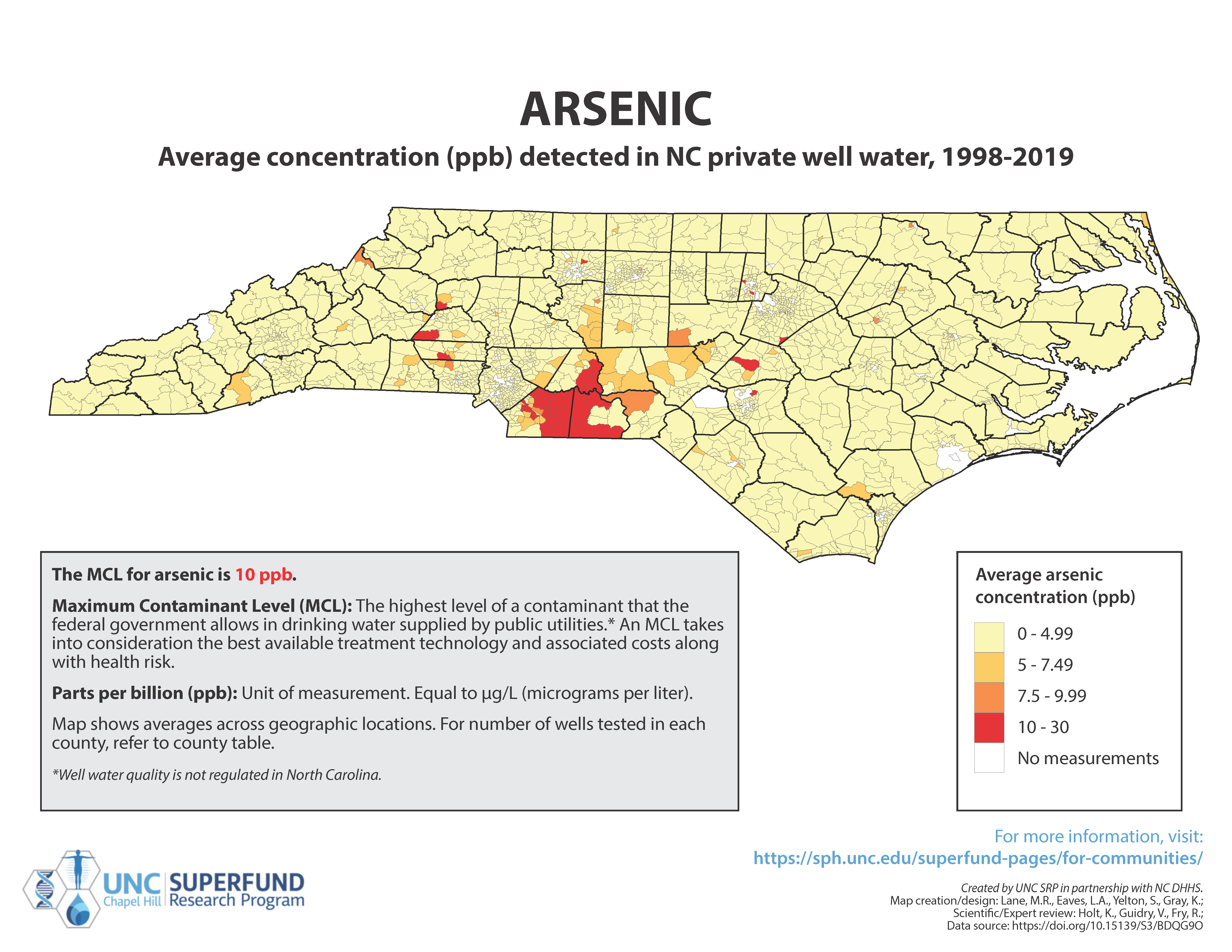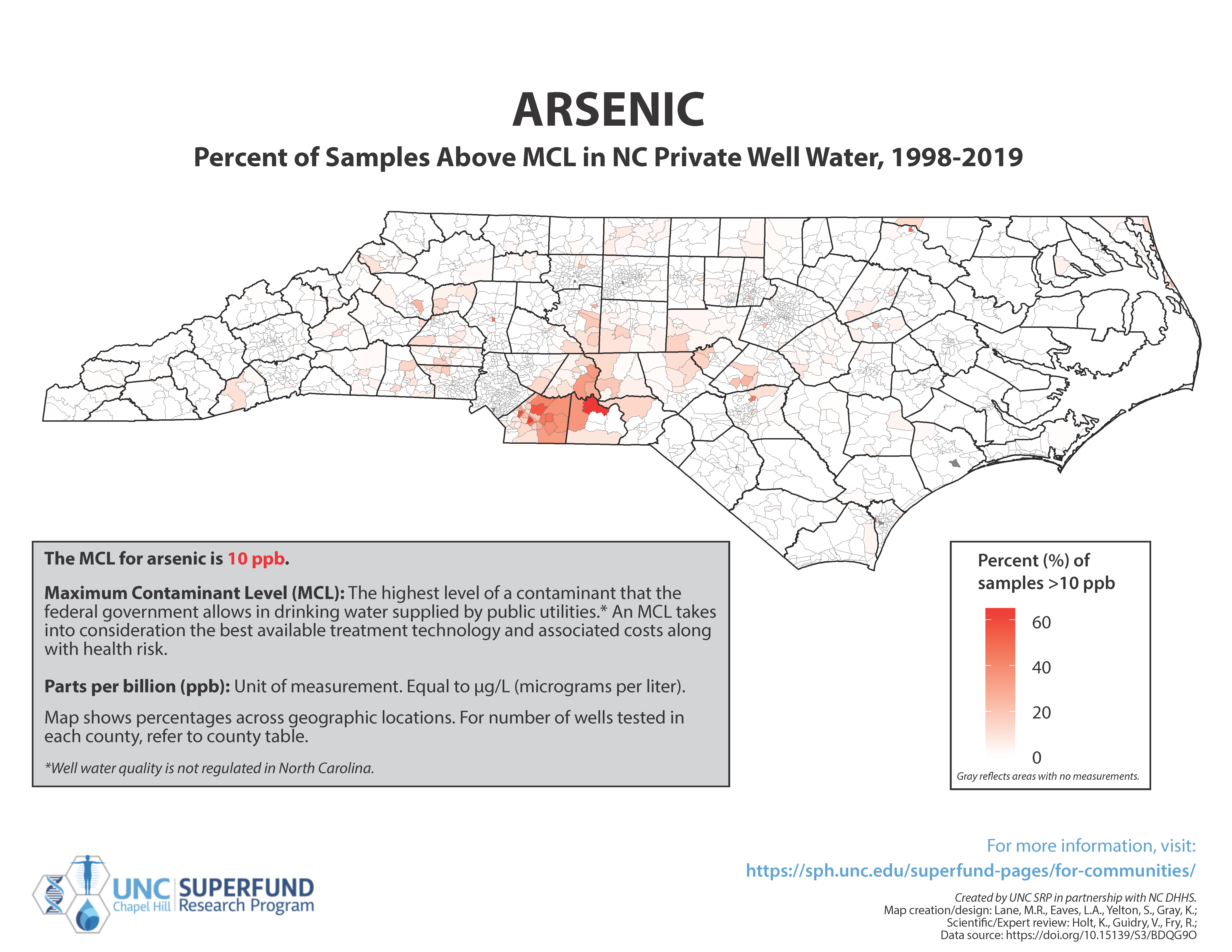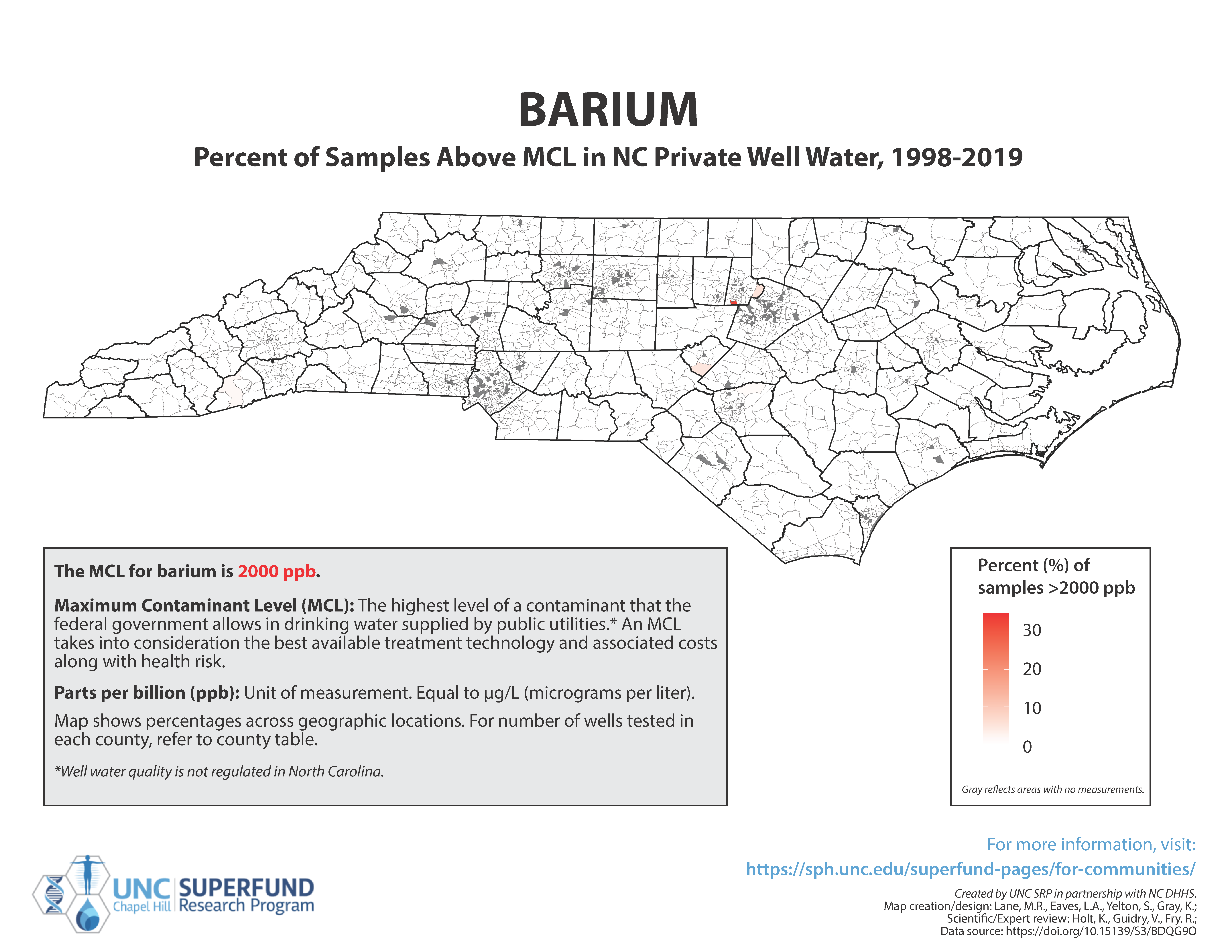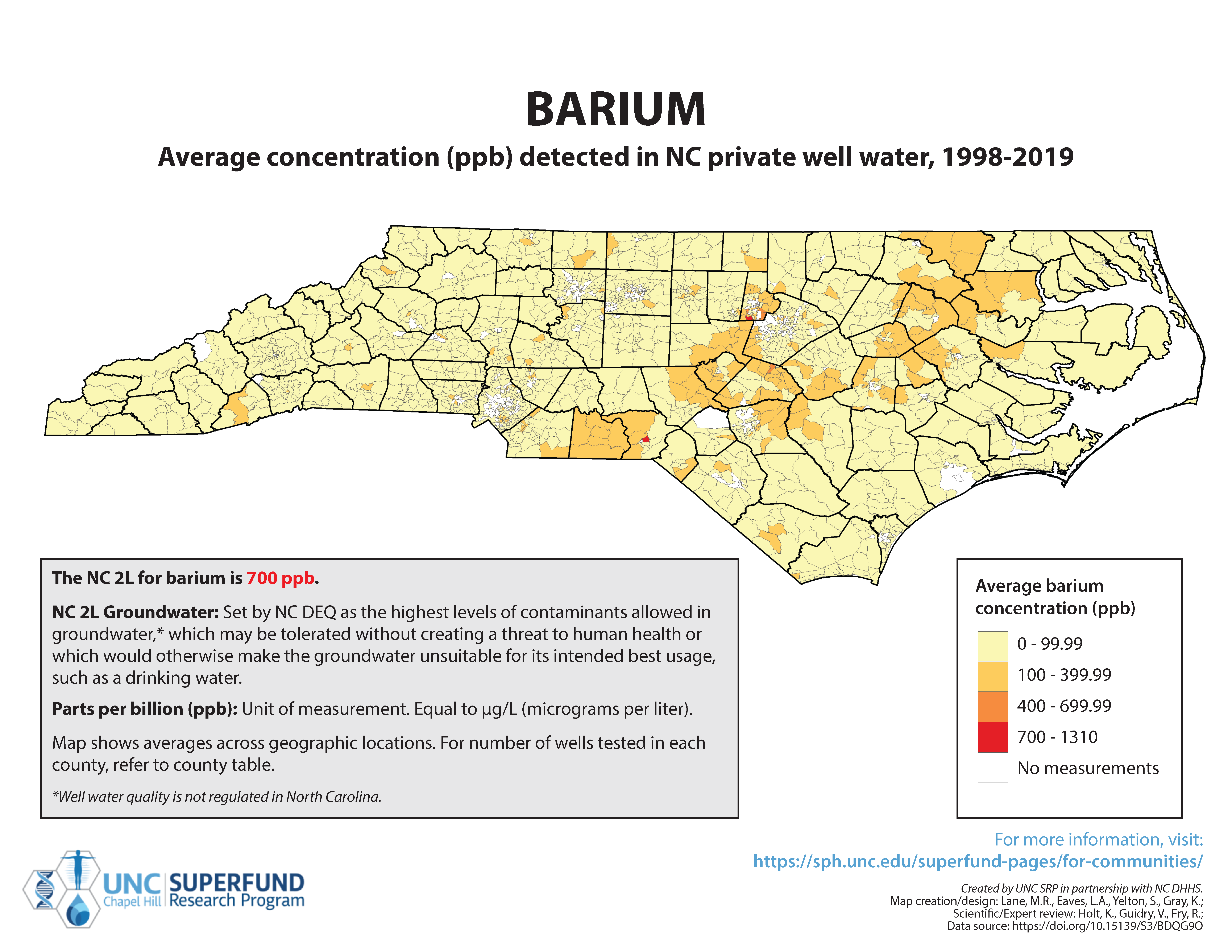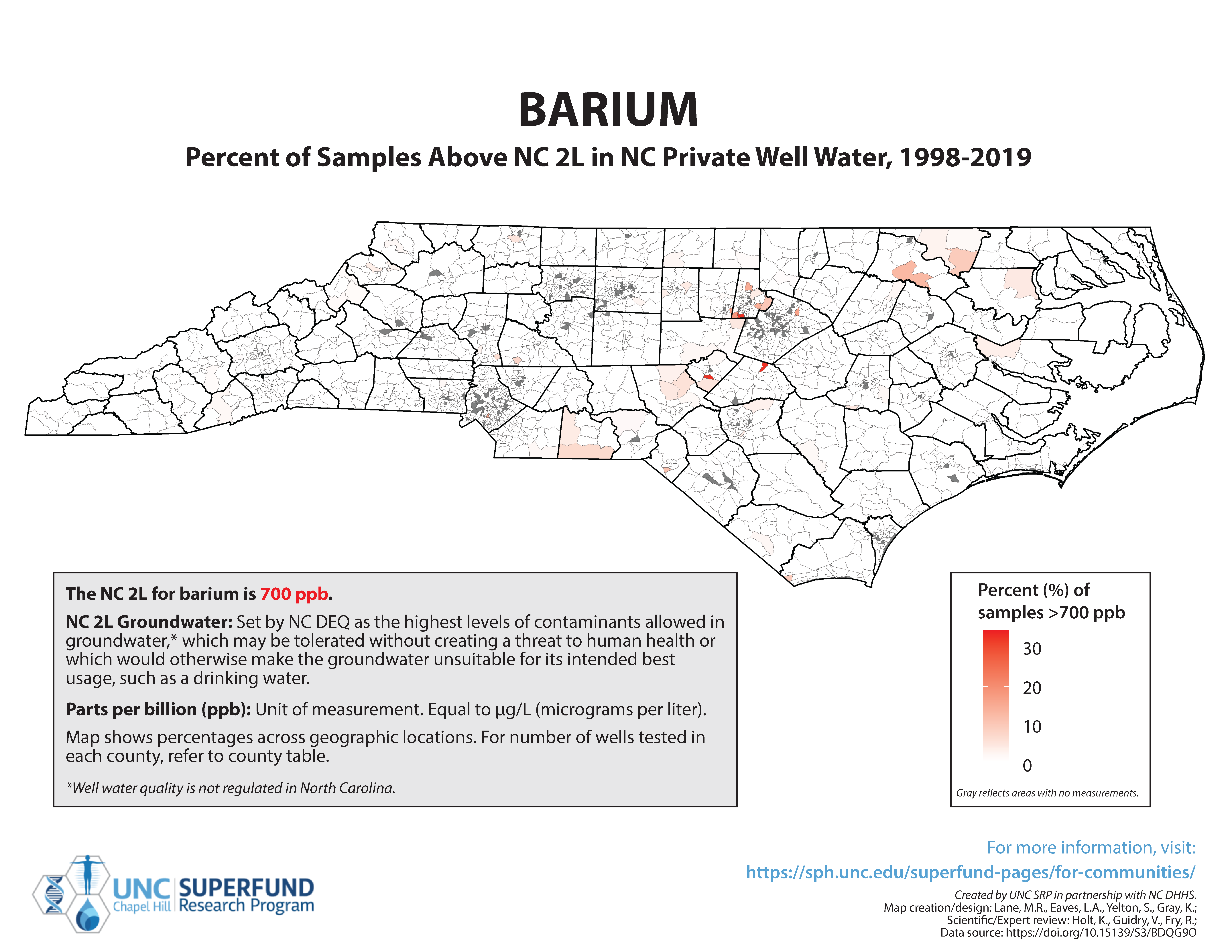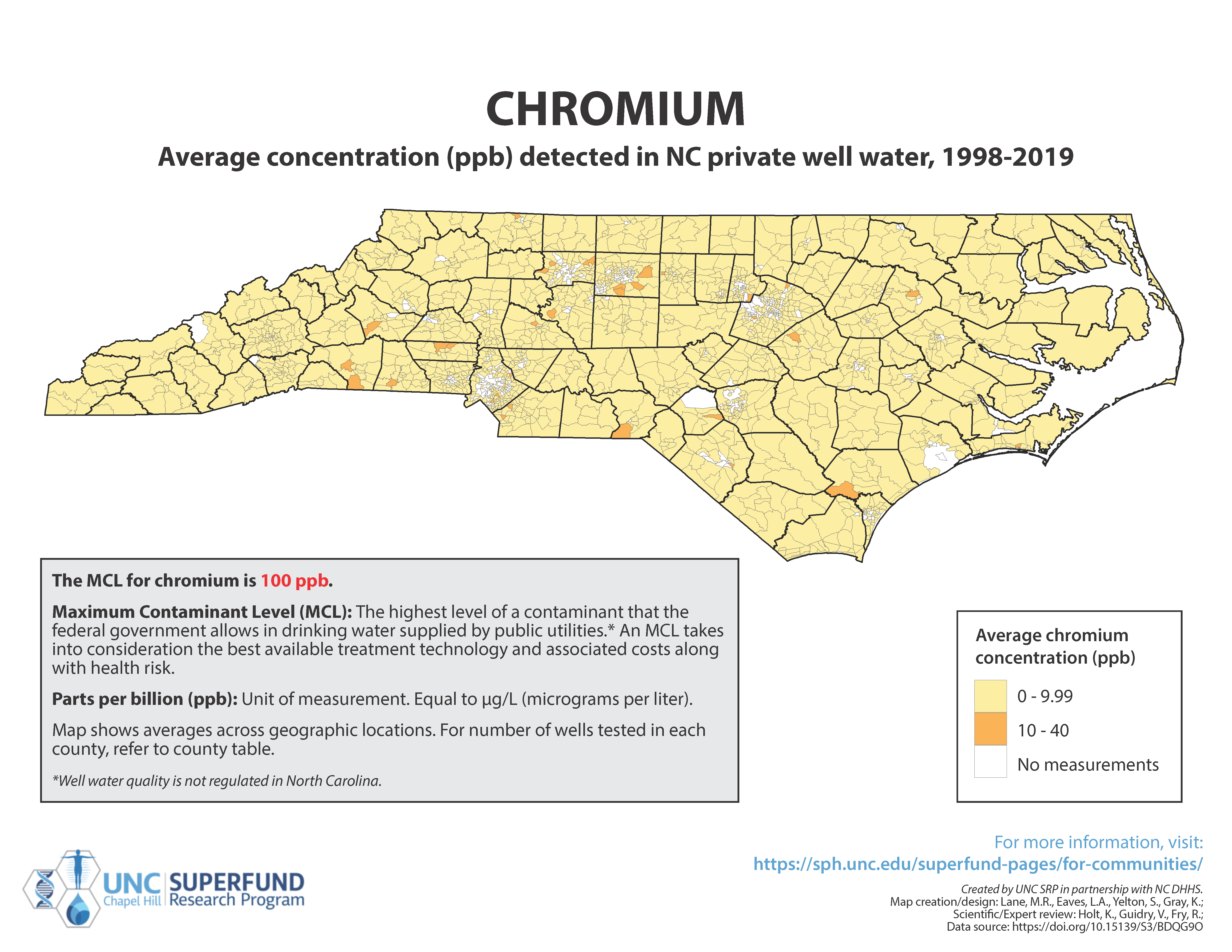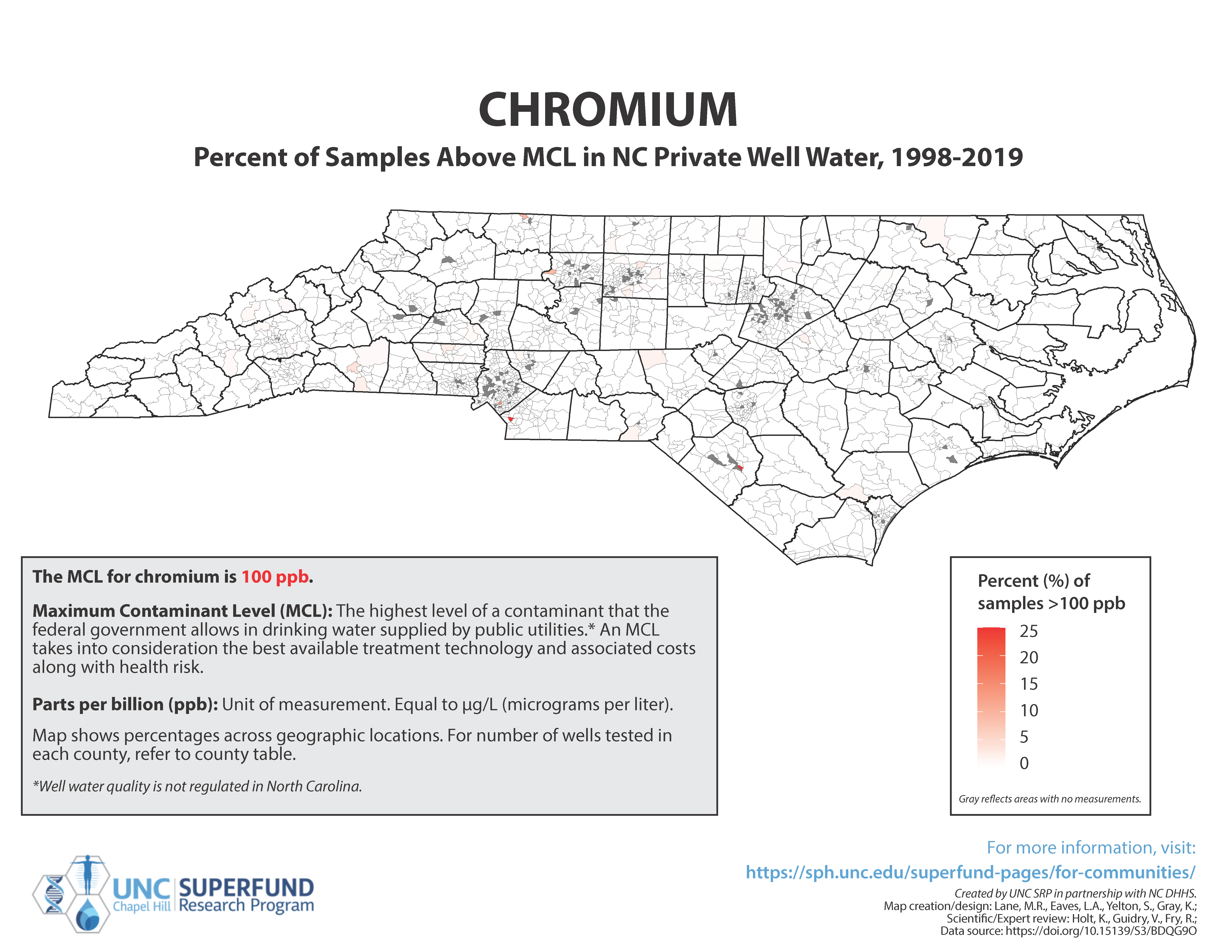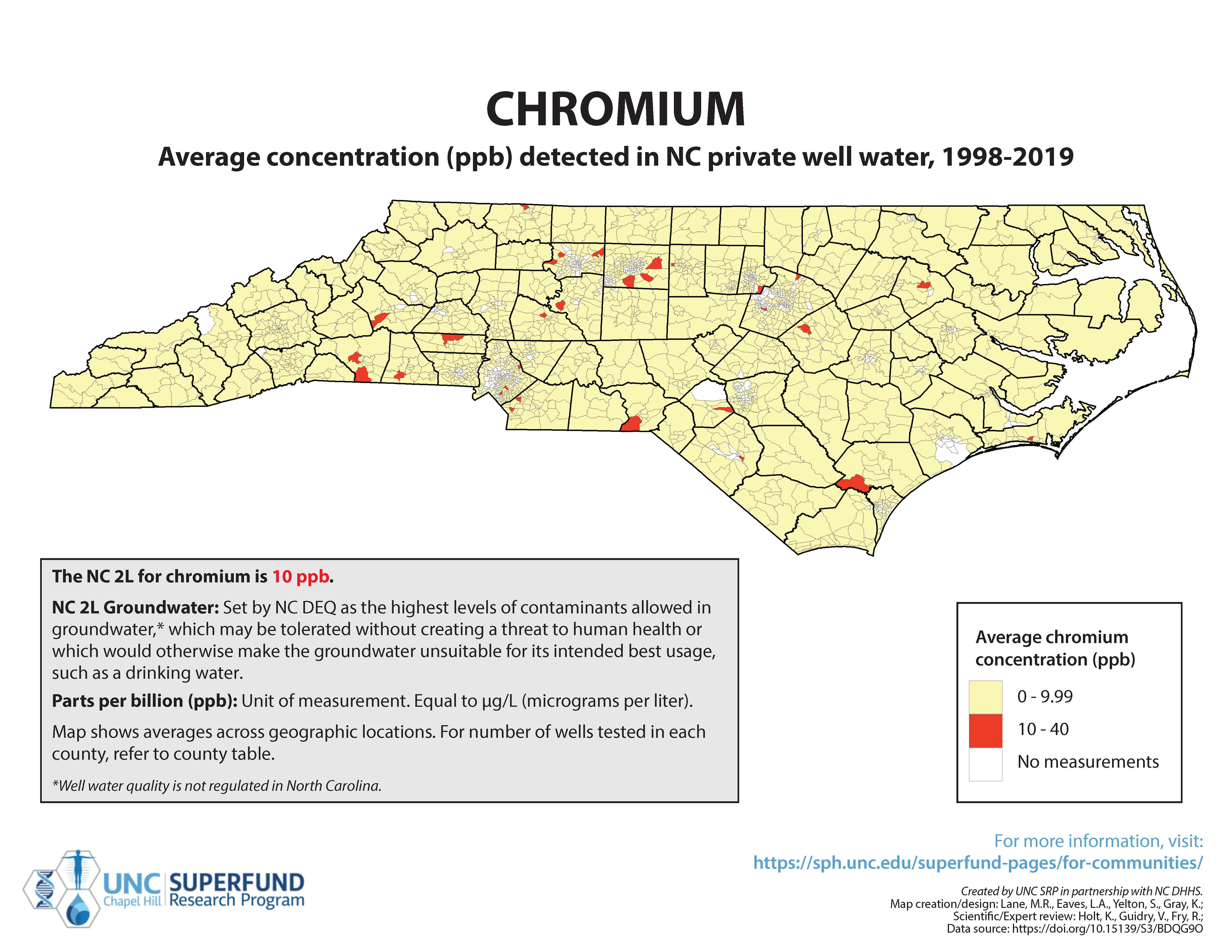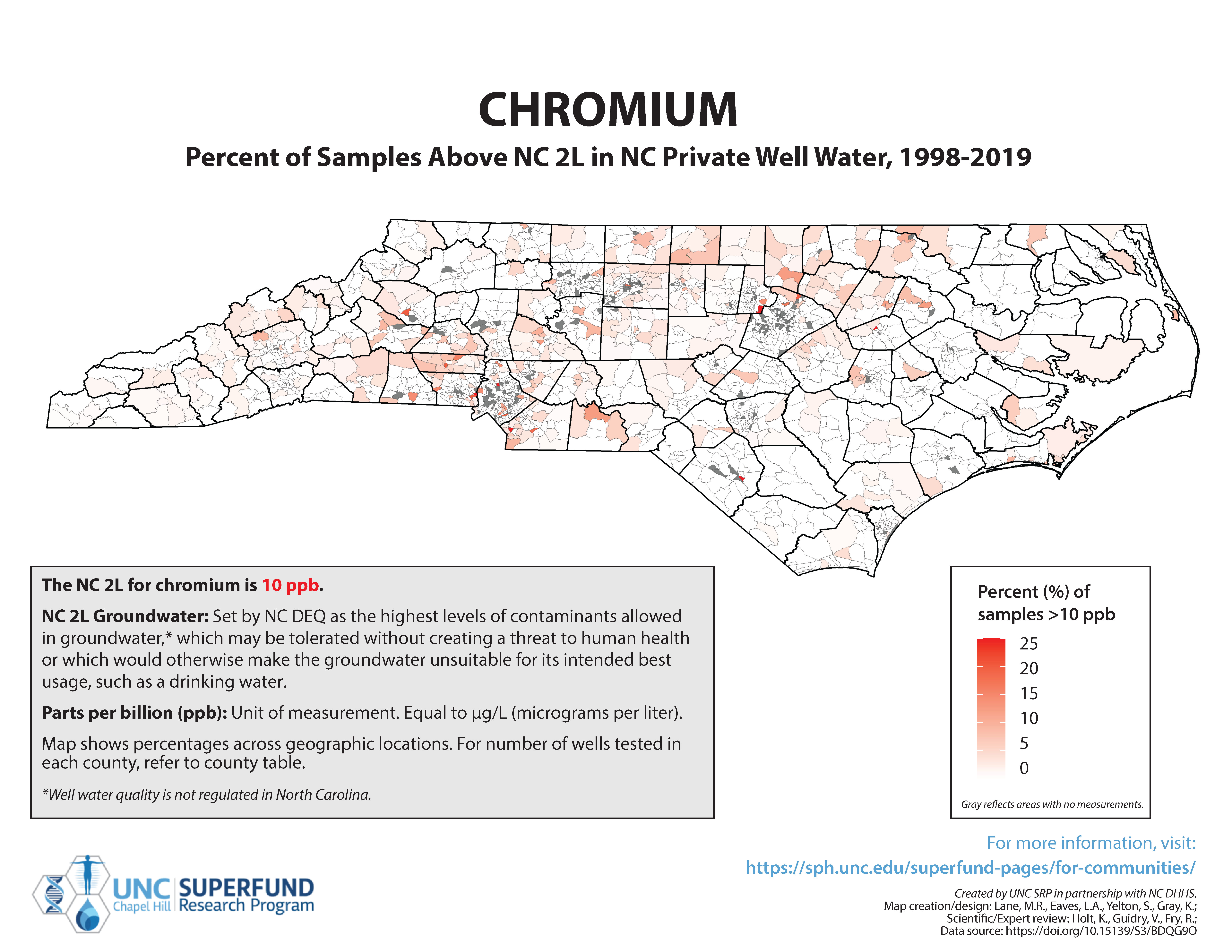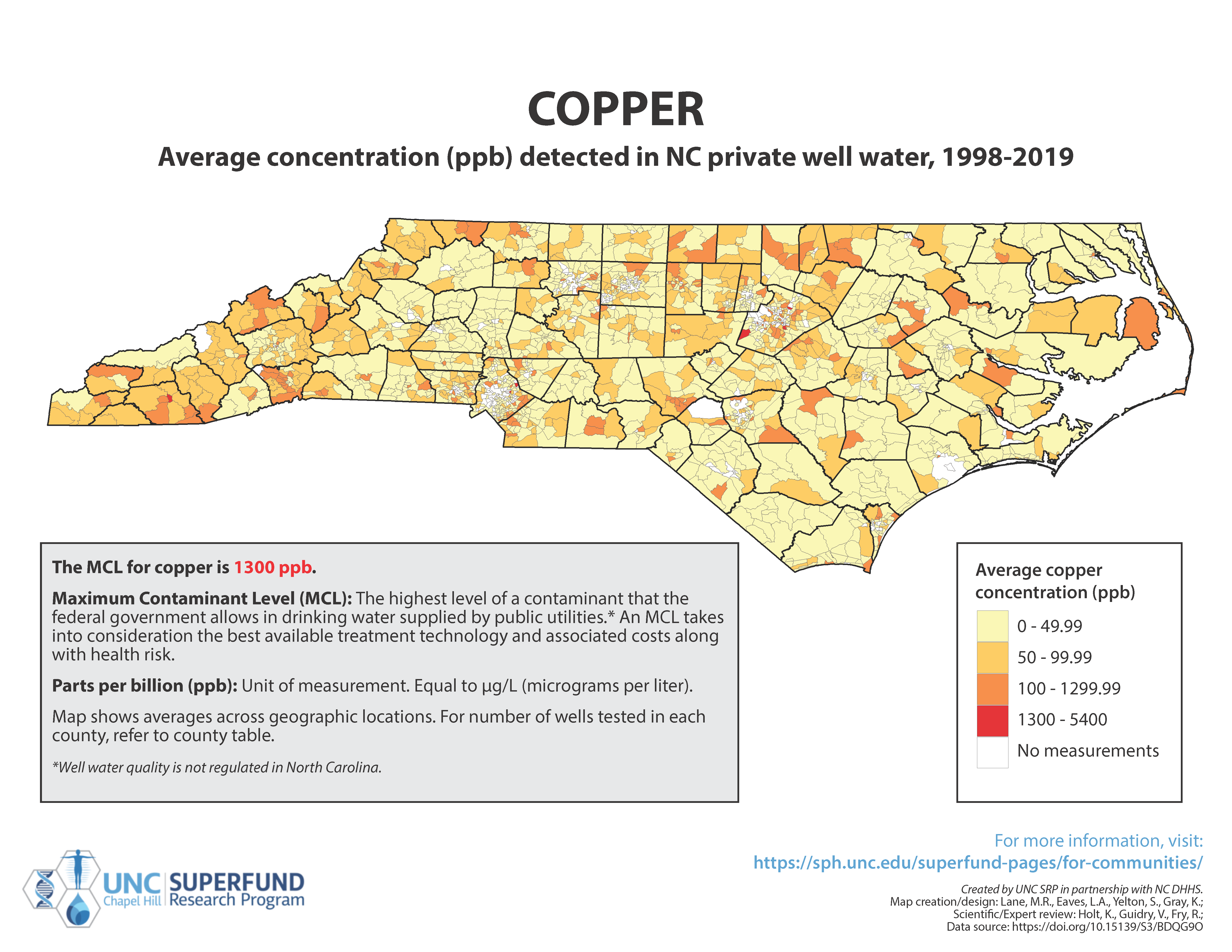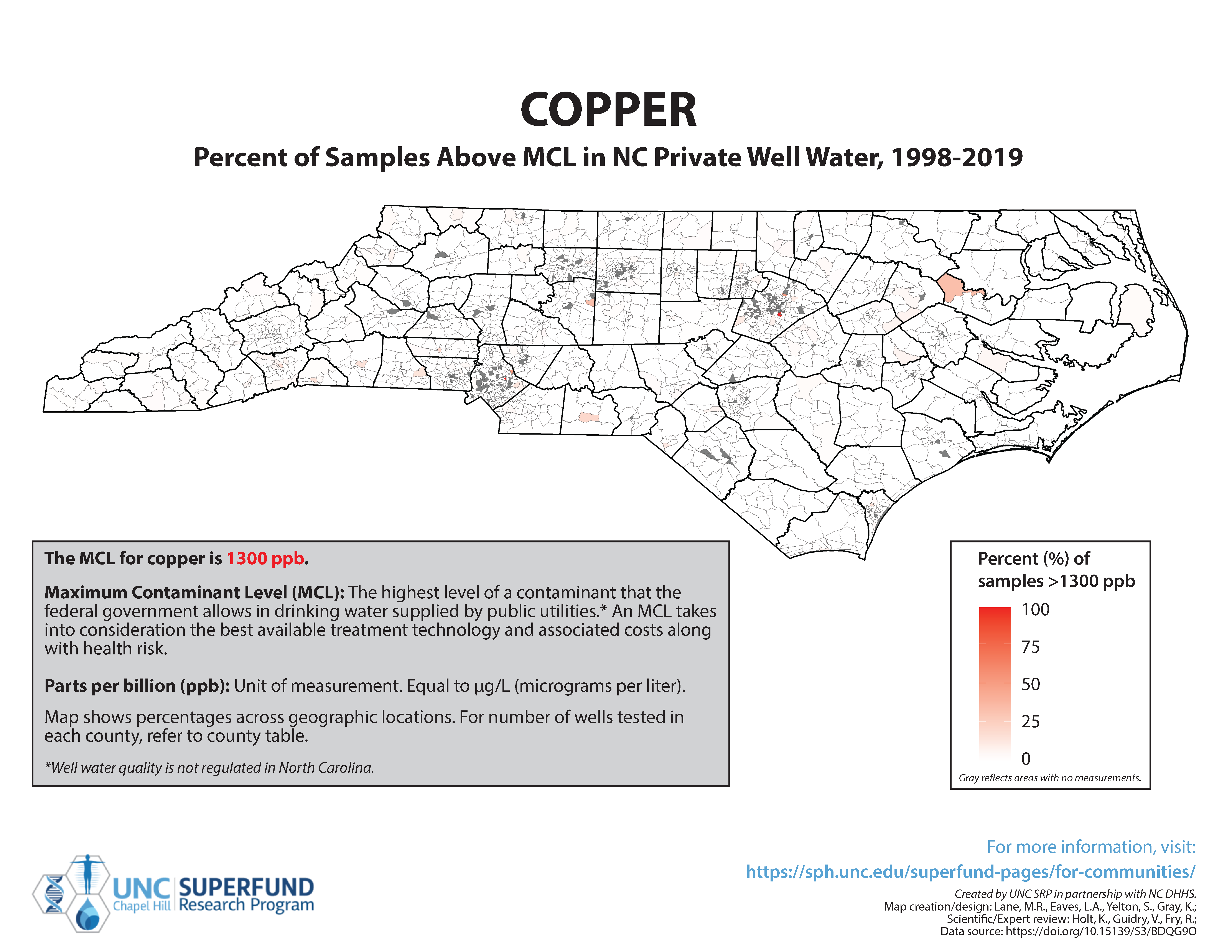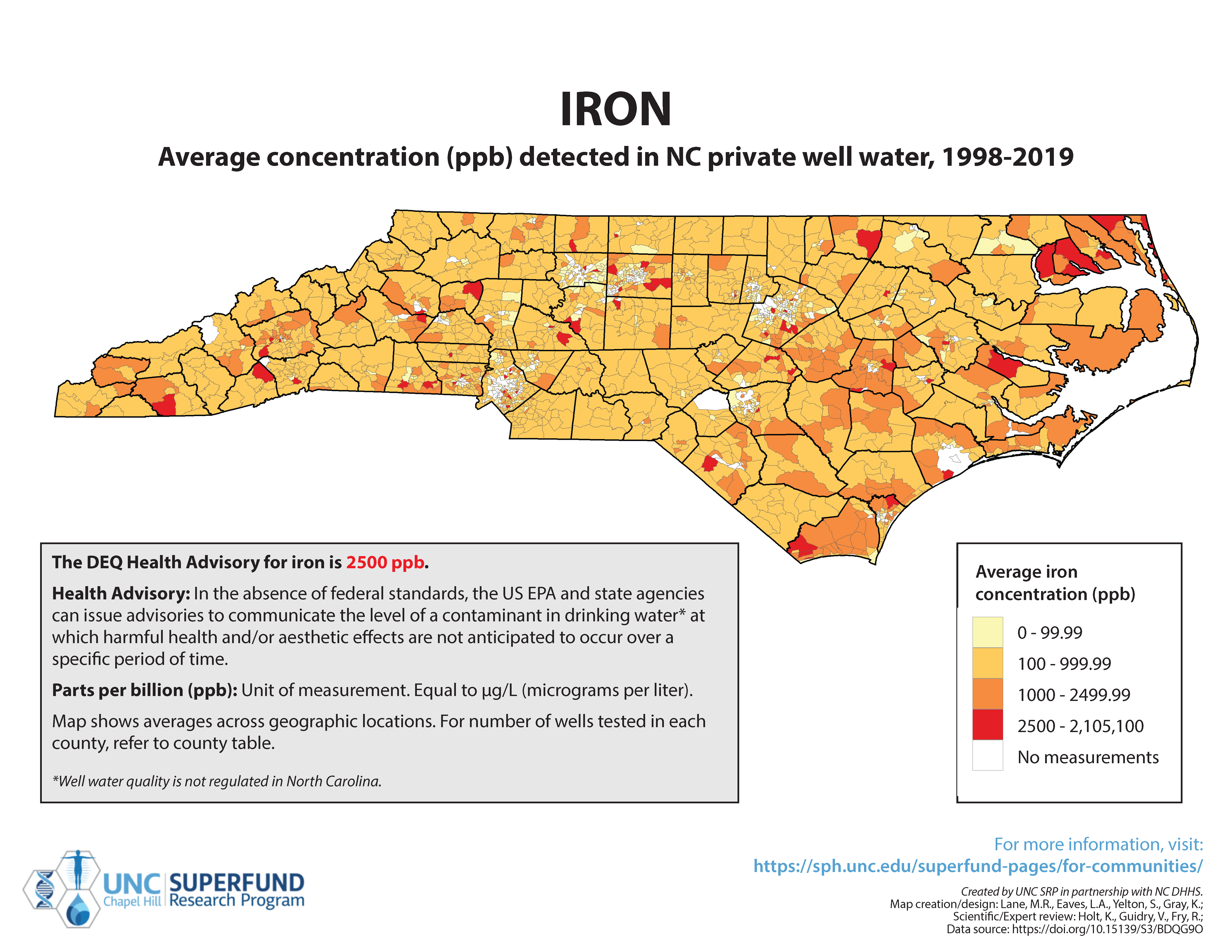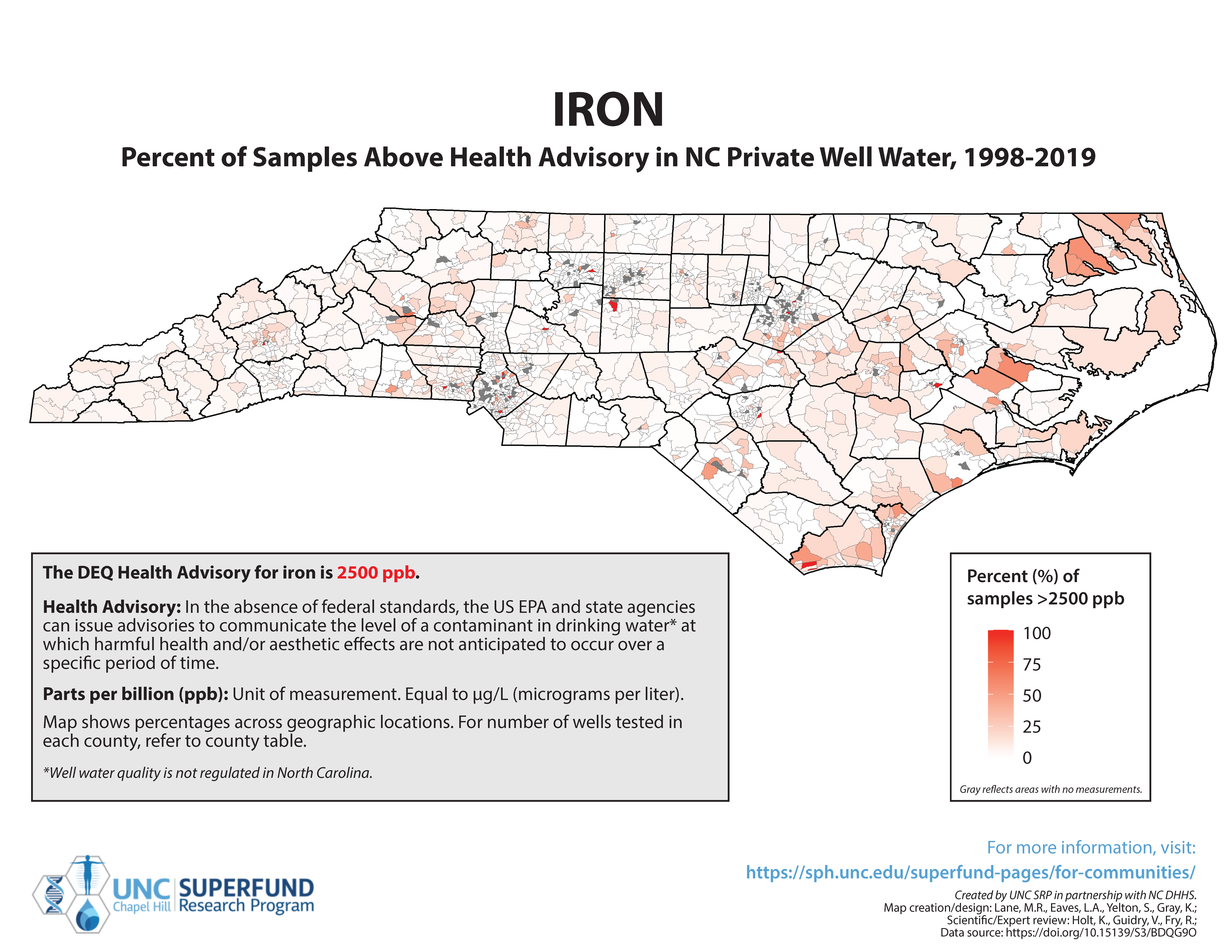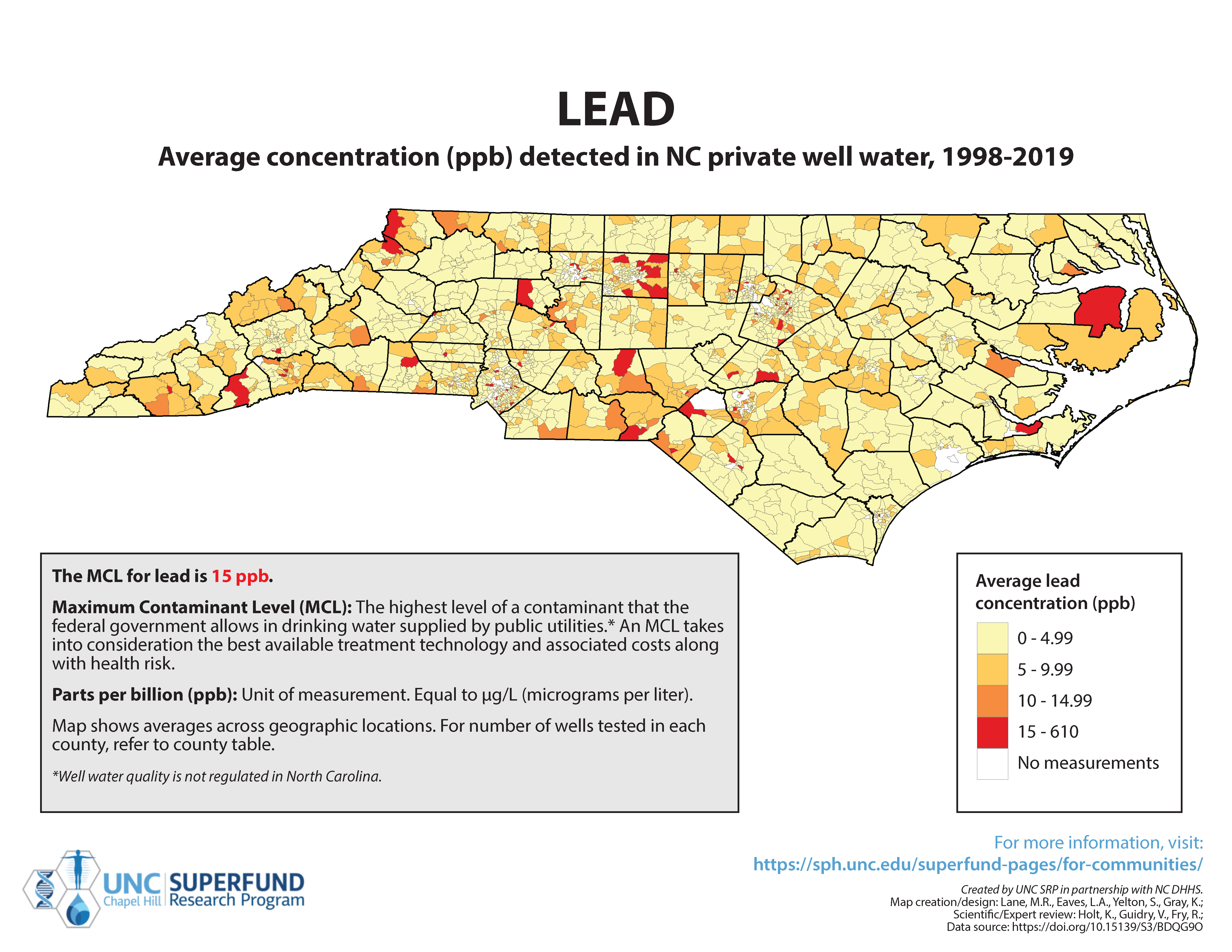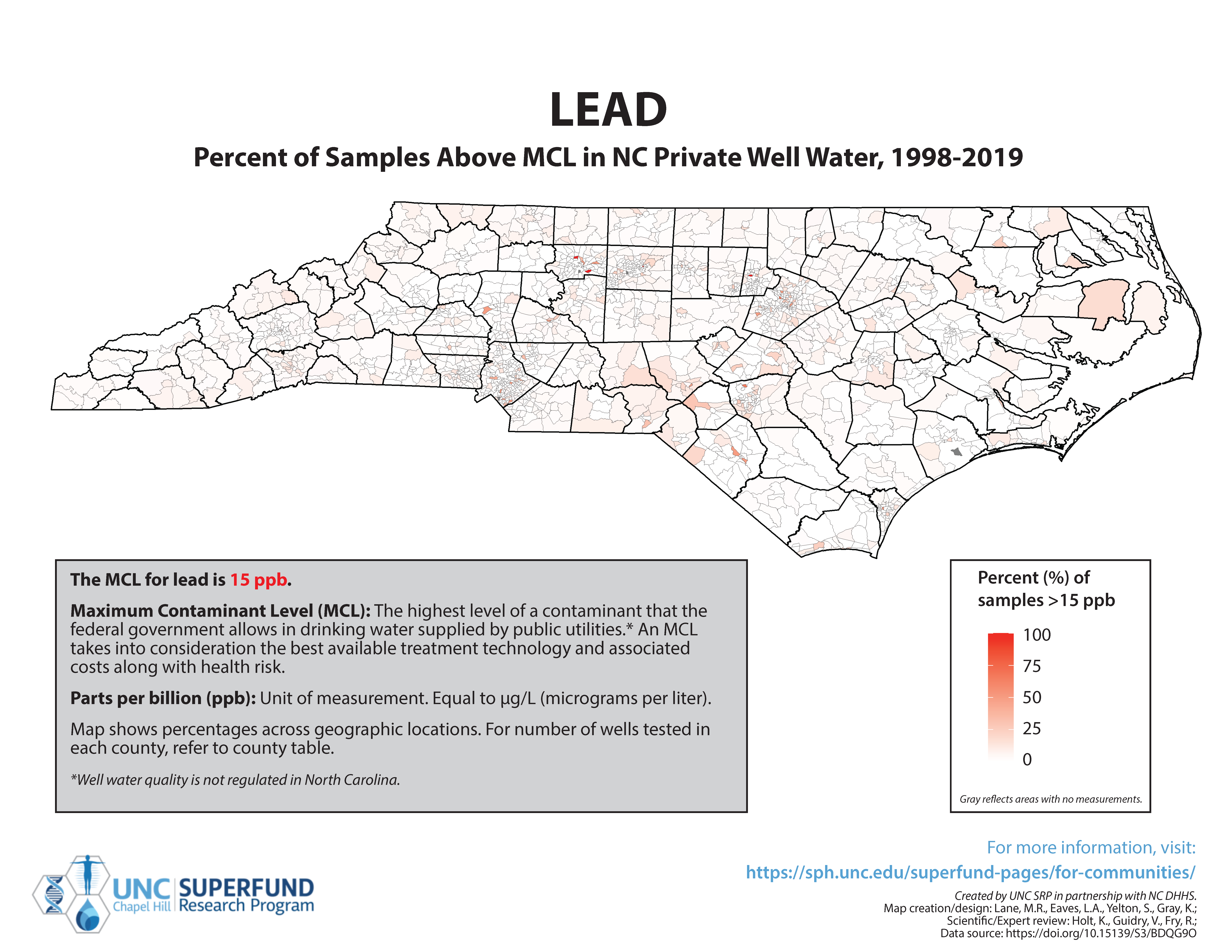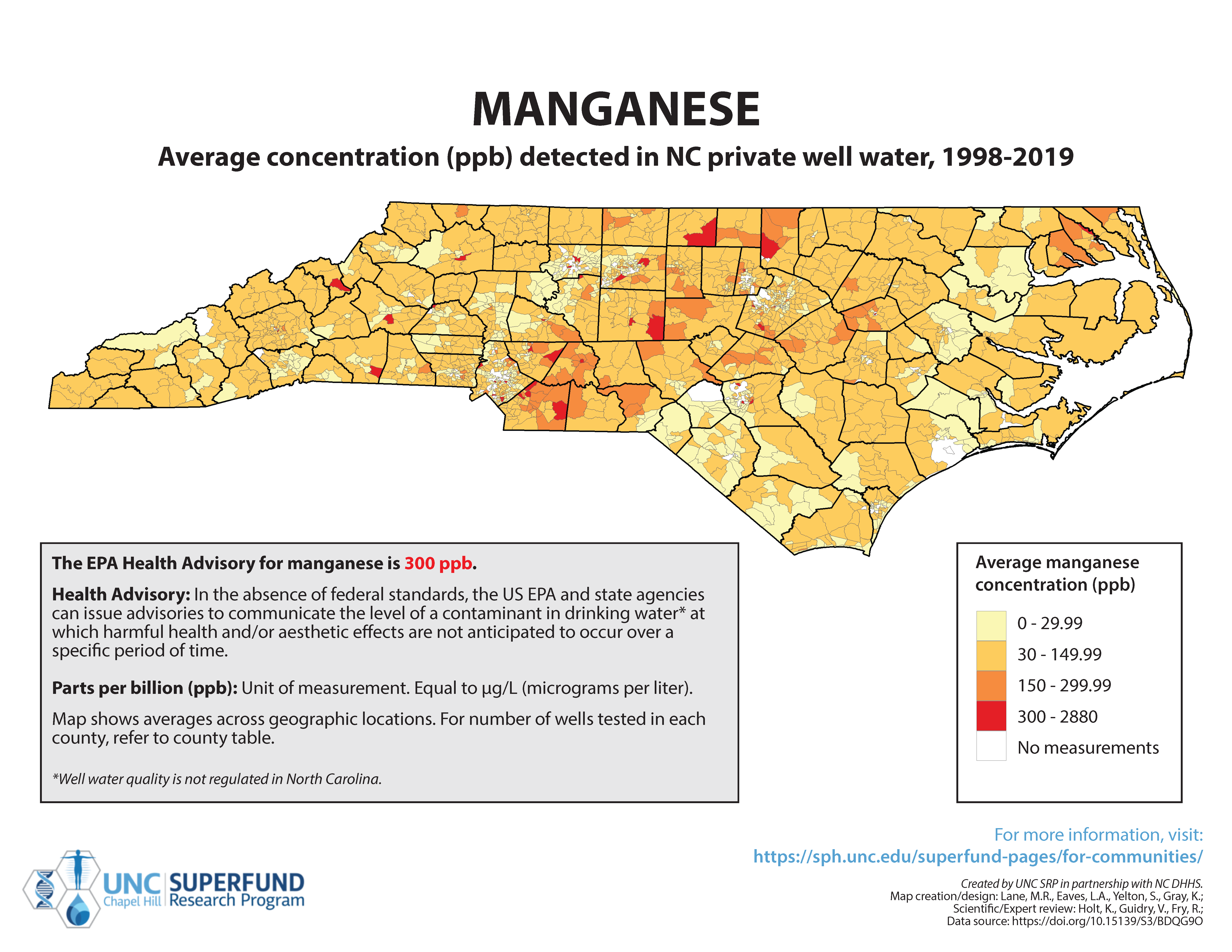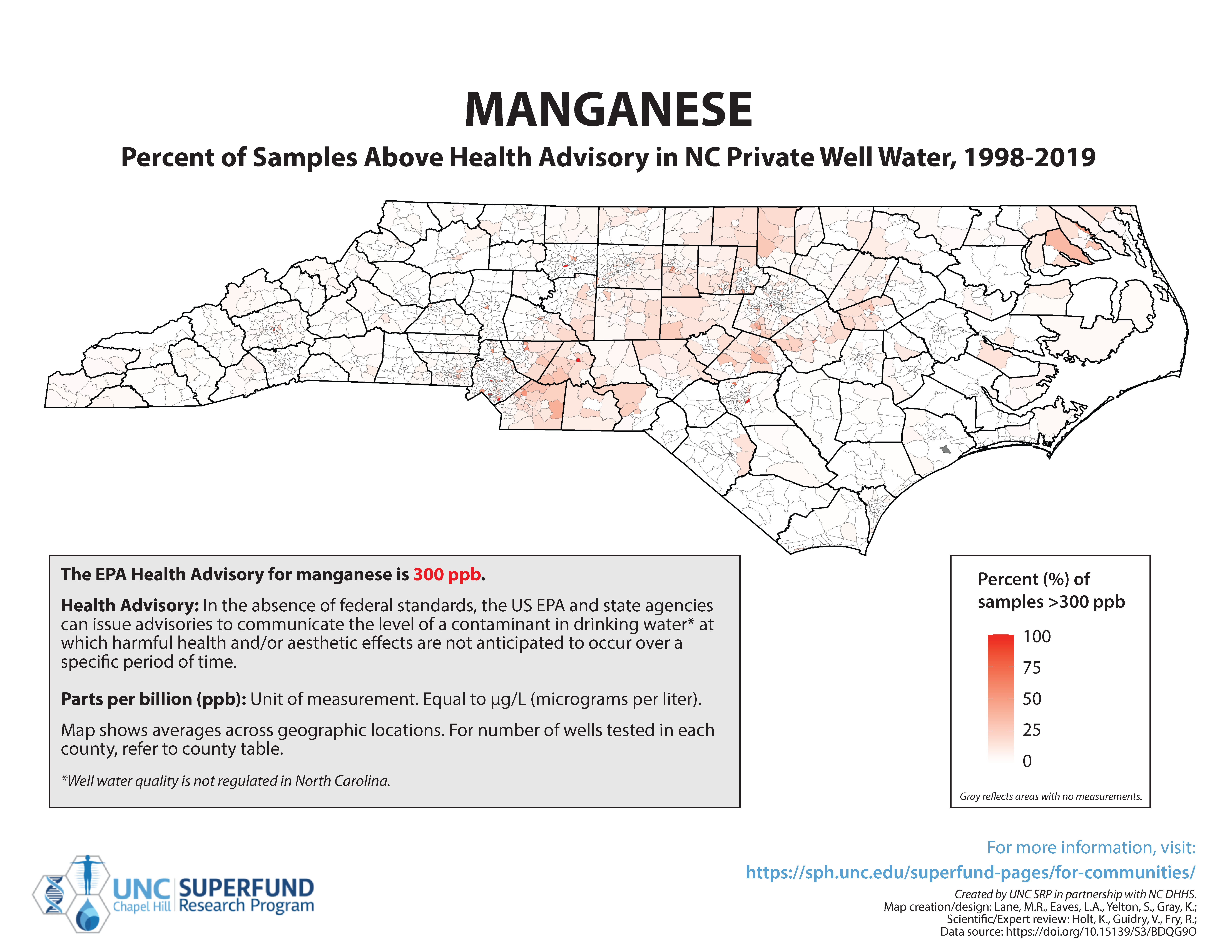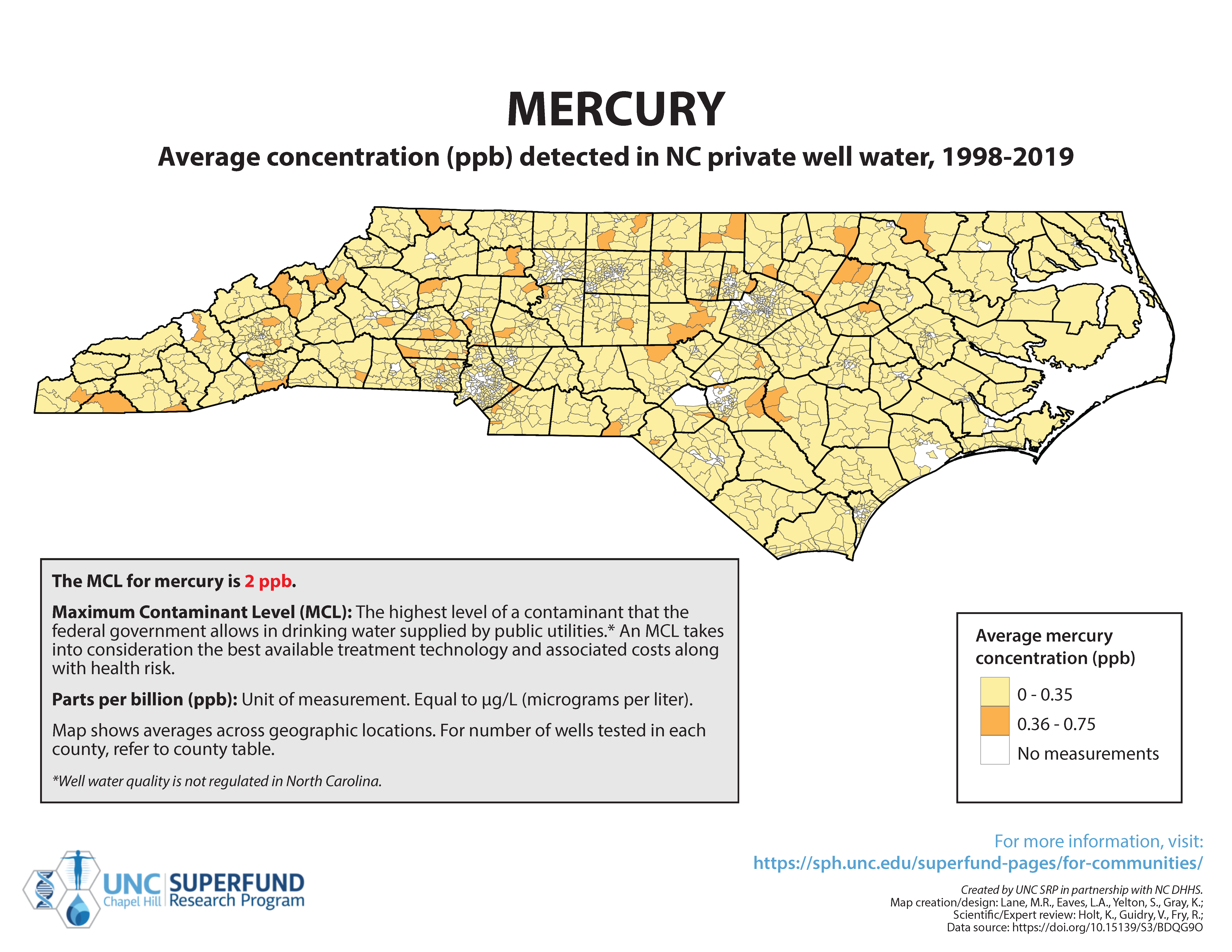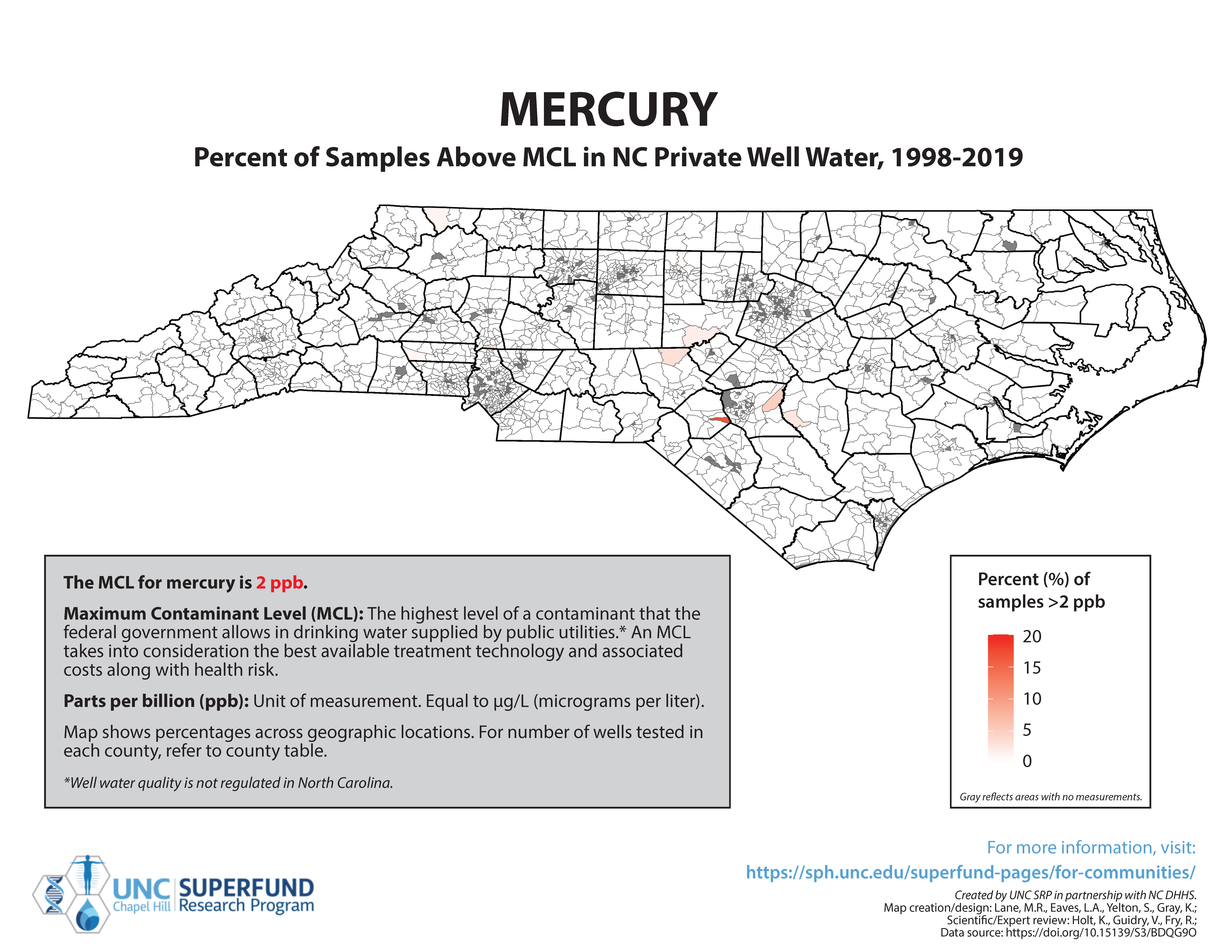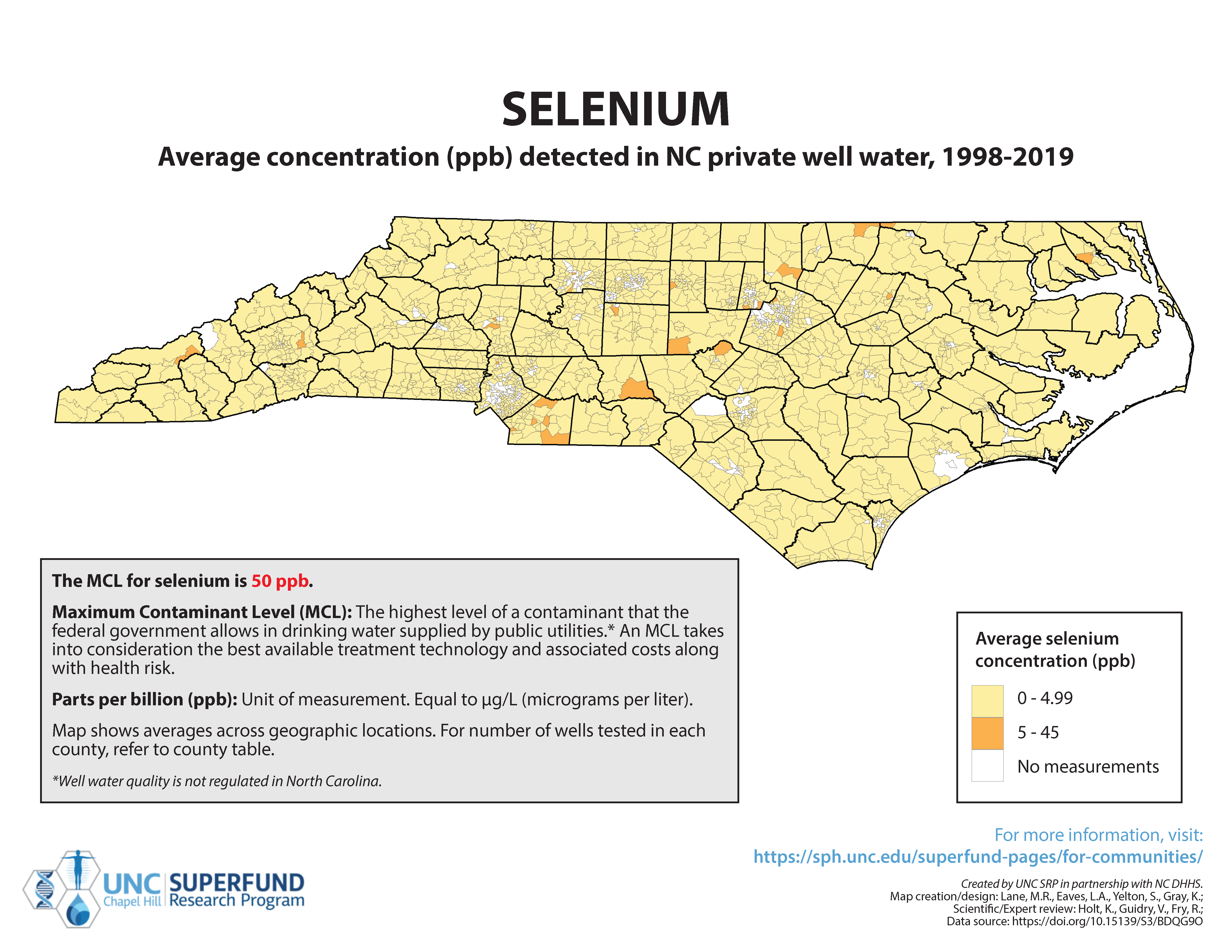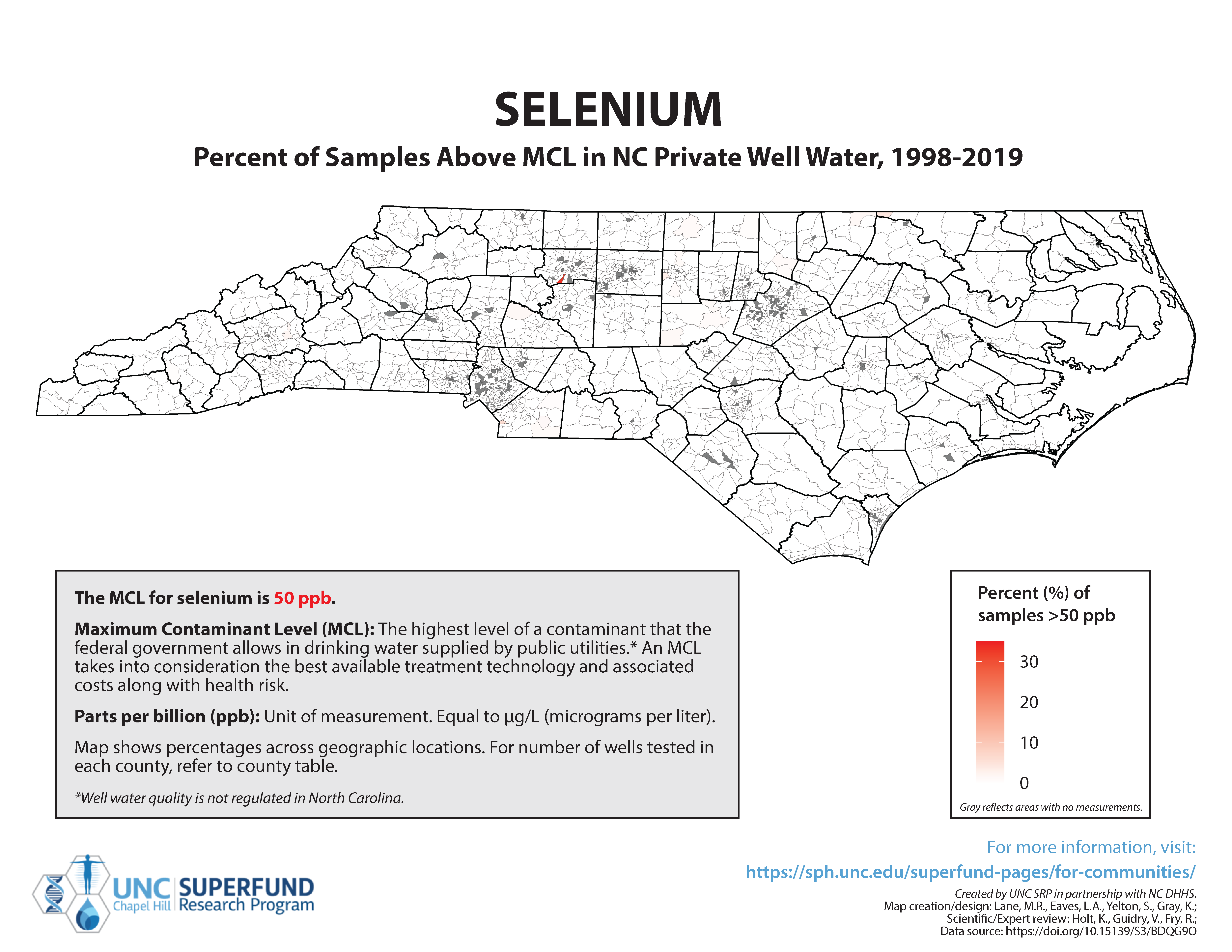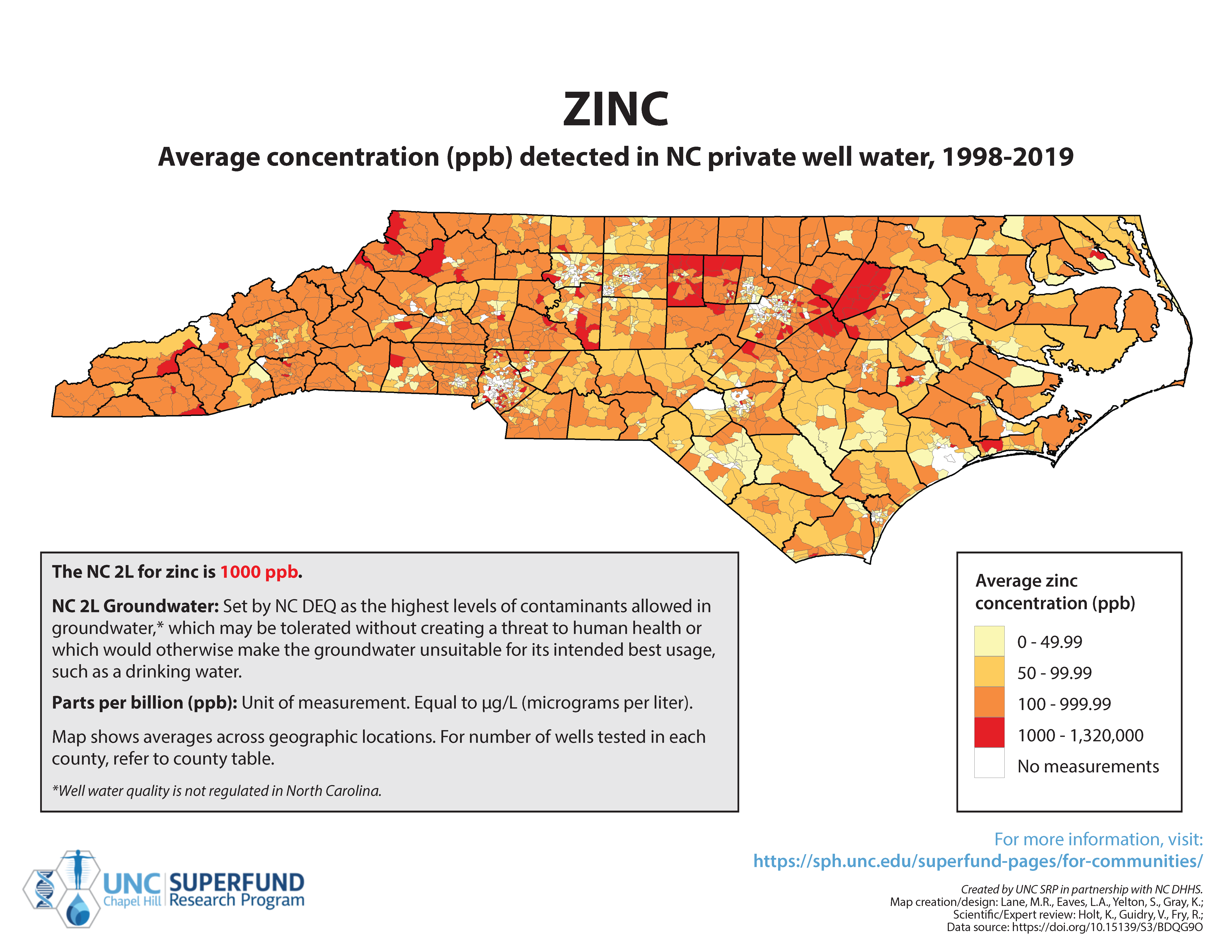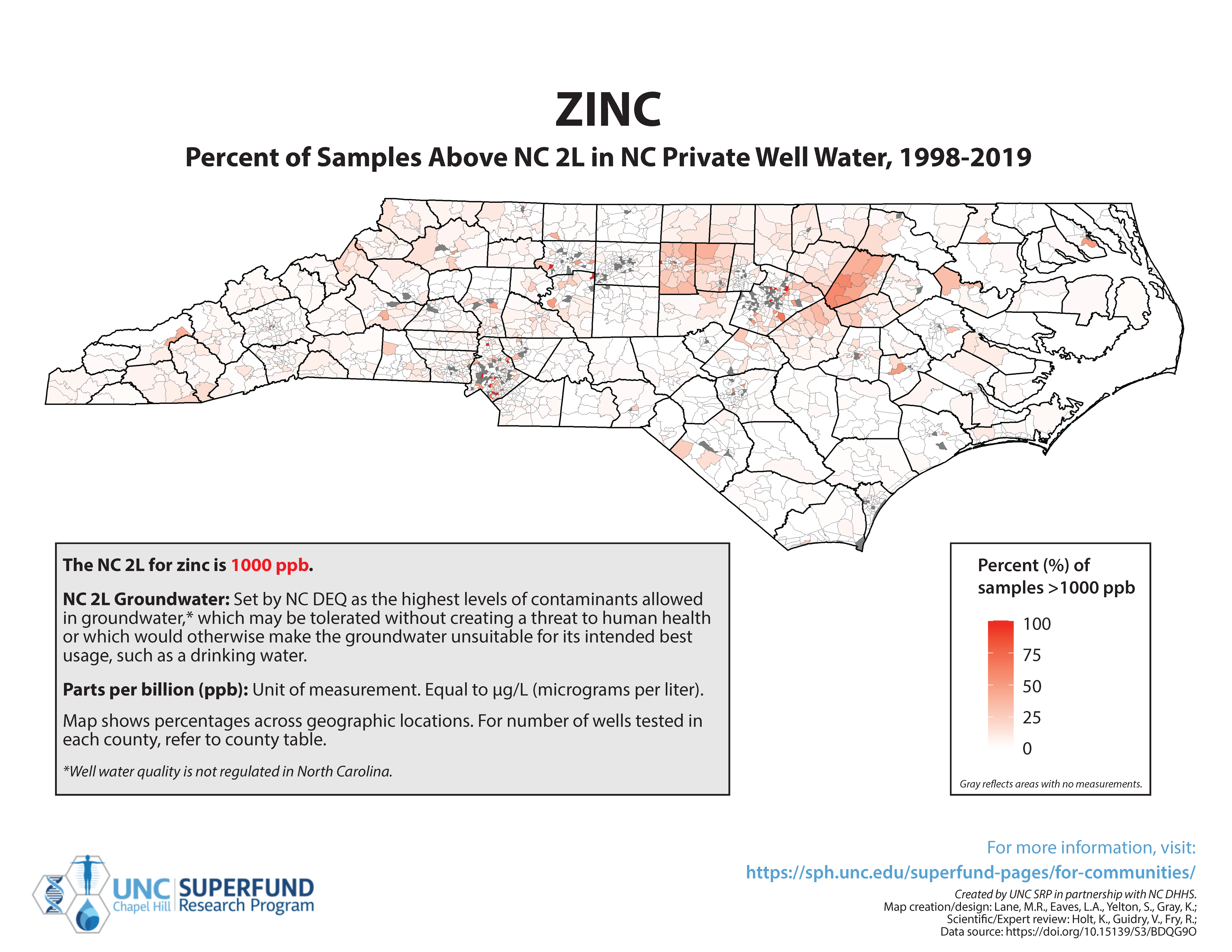Well Water Contaminants in North Carolina
UNC SRP researchers developed resources to display well water sampling data collected by the NC Department of Health and Human Services (NC DHHS) from October 1998 – May 2019. The resources below allow the user to search by contaminant or by county and view the concentrations of heavy metals that have been detected in private well water in each of North Carolina’s 100 counties.
View by contaminant | View by county | Interactive map
View by Contaminant
 Expand the list on the right to display two maps for each contaminant. The first map displays the average concentration of the contaminant. The second map shows the percent of samples that are above the designated drinking water standard. For the number of wells tested in each county, refer to the county tables below.
Expand the list on the right to display two maps for each contaminant. The first map displays the average concentration of the contaminant. The second map shows the percent of samples that are above the designated drinking water standard. For the number of wells tested in each county, refer to the county tables below.
Recommended Citation: Lane, M.R., Eaves, L.A., Yelton, S., Gray, K., Fry, R. (2023) Heavy metal contamination trends based on the NCWELL database: A series of North Carolina maps. UNC-Chapel Hill Superfund Research Program.
Authors: Megan Lane, MEA, Lauren Eaves, PhD, Sarah Yelton, MS, Kathleen Gray, PhD, UNC-Chapel Hill
Subject Matter Experts & Contributors: Kennedy Holt, MSPH, NC DHHS, Virginia Guidry, PhD, NC DHHS, Rebecca Fry, PhD, UNC-Chapel Hill
Acknowledgements: UNC-Chapel Hill Superfund Research Program (National Institute of Environmental Health Sciences, P42ES031007) & NC DHHS, Occupational and Environmental Epidemiology Branch
Related Publication: Eaves, L.A., Keil, A.P., Rager, J.E., George, A., Fry, R.C. Analysis of the novel NCWELL database highlights two decades of co-occurrence of toxic metals in North Carolina private well water: Public health and environmental justice implications. Science of the Total Environment. 2022; 812. doi:10.1016/j.scitotenv.2021.151479
View by County
Select a county to view a table of the private well water testing results.
Explore Further
For additional information on arsenic, cadmium, lead, and manganese, check out NC ENVIROSCAN. This mapping tool allows users to visualize trends, including sociodemographic information, environmental justice indicators, and health outcomes, across NC.

